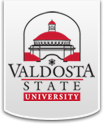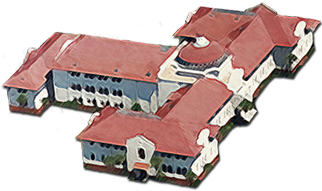Selected Educational Outcomes
- Students will differential equations of first and second order and linear equations of higher order, and investigate their applications.
- Students will derive discrete and continuous probability distributions and solve problems involving linear and non-linear optimization, expected values and probabilities for discrete and continuous random variables, and numerical methods.
- Students will exhibit the logical reasoning skills and technical background necessary to do mathematical proofs by proving theorems in Transitions to Higher Math, linear algebra, mathematical modeling, numerical analysis, operations research, and differential equations.
- Students will use mathematical software and modeling to solve problems in numerical analysis, operations research, differential equations, linear algebra, and statistics.
- Students will communicate mathematical ideas and modeling and present them in class to the faculty.
Examples of Outcome Assessments
The department assesses the extent to which the program requirements create the desired outcomes by a variety of techniques. Examples of these assessments include the following:
- The capstone courses are used to assess student progress since taking Area F courses. They determine if students have mastered effective oral and written communication skills, acquired critical analysis skills, and learned to use the library and technological resources in solving non-routine problems. Assessment methods include student projects and presentations.
- Student examinations and samples of student work are kept in the department and are examined by the faculty to assess student content knowledge.
- Available student and alumni survey data collected by the University will be examined to determine student satisfaction with their undergraduate preparation for further education or employment.
Requirements for the Bachelor of Science Degree with a Major in Applied Mathematics
| Code | Title | Hours |
|---|---|---|
| Core Curriculum | 60 | |
| Core Curriculum Areas A-E (See VSU Core Curriculum) | 42 | |
| Core Curriculum Area F | ||
| MATH 2261 | Analytic Geometry and Calculus I ("spillover" from Area D) | 1 |
| MATH 2262 | Analytic Geometry and Calculus II | 4 |
| MATH 2263 | Analytic Geometry and Calculus III | 4 |
| CS 1301 | Principles of Programming I (3 credits “spill over” into “Supporting Courses”) | 1 |
| PHYS 2211K | Principles of Physics I | 4 |
| PHYS 2212K | Principles of Physics II | 4 |
| Senior College Curriculum | 60 | |
| MATH 2150 | Introduction to Linear Algebra | 3 |
| MATH 3600 | Probability and Statistics | 3 |
| MATH 4621 | Mathematical Statistics I | 3 |
| MATH 3040 | Set Theory | 3 |
| MATH 3340 | Ordinary Differential Equations | 3 |
| MATH 4150 | Linear Algebra | 3 |
| MATH 4081 | Modern Algebra I | 3 |
| MATH 4260 | Mathematical Analysis | 3 |
| MATH 4651 | Numerical Analysis I | 3 |
| MATH 4901 | Operations Research I | 3 |
| MATH 4910 | Mathematical Models | 3 |
| Select one of the following: | 3 | |
| Mathematical Statistics II | ||
| Numerical Analysis II | ||
| Operations Research II | ||
| Optics | ||
| Theoretical Mechanics I | ||
| Electromagnetism I | ||
| Quantum Mechanics I | ||
| Supporting Courses | 6-9 | |
| Principles of Programming I ( “spillover” from Area F) | ||
Foreign Language & Culture Requirement | ||
| Electives (Must include at least 6 hours of courses numbered 3000 or above in a single discipline outside the major) | 15-18 | |
| Total hours required for the degree | 120 | |
Additional Requirements and Notes
- Students must complete 16 credits of laboratory science, including the calculus-based physics indicated in Area F.
- A grade of “C” or better must be earned in all “Courses Required for the Major.” Also, a grade of “C” or better is required in MATH 1111, MATH 1112, MATH 1113, MATH 2150, MATH 2261, MATH 2262, MATH 2263, and CS 1301, if any of those courses are taken.
- Students must complete a sequence of two courses in any foreign language, either in “Supporting Courses” or in a combination of Area C and “Supporting Courses.” Minimum acceptable grades in the language courses are the same as minimum acceptable grades in the Core Curriculum.



